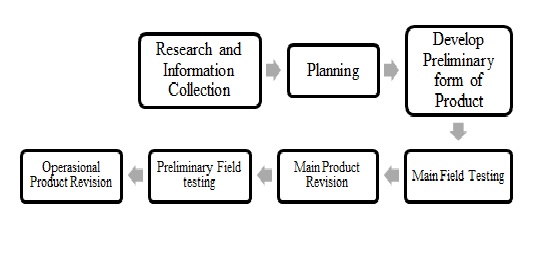
The Development of Assessment Instruments with Problem Posing Methods to Measure Students Creative Thinking Ability in Acid Base Materials
Abstract
Keywords
Full Text:
PDFReferences
Arikunto, S. (2010). Dasar-Dasar Evaluasi Pendidikan. Jakarta: Bumi Aksara.
Asmawati, E. (2018). Pengembangan Asesmen Kemampuan Berpikir Kritis Siswa pada Pelajaran Fisika SMA dengan Model Creative Problem Solving. Tesis. Universitas Negeri Lampung, Lampung.
Azwar. (2012). Reliabilitas dan Validitas. Yogyakarta: Pustaka Pelajar.
Daryanto., & Karim, S. (2016). Pembelajaran Abad 21.Yogyakarta: PT Gava Media
Demir, R, S., & Sahin, F. (2014). Asessment of Prospective sience Teachers’ metacognition and Creativity perceptions anda sientific toys in terms of scientific creativity. Procedia- Social and Behavior, 15(2), 686-691.
Docktor, J., & Heller, K. (2009). Robust Assessment Instrument for Student Problem Solving, Prosiding the NARST 2009 Annual Meeting, Minnesota university,-
Maria, E., Rery, U., & Astuti, W. (2018). Peningkatan Kemampuan Berpikir Kritis Peserta Dididk pada Materi Termokimia di SMA Pekanbaru Melalui Penerapan Strategi Pembelajaran Process Oriented Guided Inquiry Learning (POGIL). Jurnal Riset Pendidikan Kimia, 8(1), 17-27.
Marwiyah, S. (2015). Pengembangan Instrumen Penilaian Keterampilan Berpikir Kreatif pada Mata Pelajaran IPA Terpadu Materi Atom, Ion dan Molekul SMP Islam Al Falah. Jurnal Edu-Sains, 4(1), -
Meutia, H. (2017). Pendekatan Problem Posing dalam Meningkatkan Kemampuan Berpikir Kreatif Siswa SMA di Kota Banda Aceh. Prosiding Seminar Nasional Kemaritiman Aceh, 1(-), 199-123.
Moma, L. (2015). Pengembangan Instrumen Kemampuan Berpikir Kreatif Matematis Untuk Peserta didik SMP. Jurnal Matematika dan Pendidikan Matematika, 4(1), 2089- 855X
Mulyatiningsih, E. (2014). Metode Penelitian Terapan Bidang Pendidikan. Bandung: Alfabeta.
Ningsih, F., Murni, A., & Roza, Y. (2017). Development of Learning Tools with the Application of Learning Inventions to Improve Mathematical Problem Solving Ability Social Arithmetic Material. Journal of Educational Sciences, 4(1), 44-52.
Pratiwi, M. (2017). Student Tutoring, Facilitator and Explaining Models: A Problem Solving Metacognition towards Learning Achievements of Informatics Students. Journal of Educational Sciences, 3(2), 145-154.
Suarman, Hendripides., & Nurul, H. (2018). Development of Innovative Teaching Materials through Scientific Approach. Journal of Educational Sciences, 2(2), 14-22.
Sunardi., & Sujadi, I. (2017). Sumber Belajar Calon Peserta Program PLPG Penilaian Dan Evaluasi Pembelajaran. Kementerian Pendidikan Dan Kebudayaan Direktorat Jenderal Guru dan Tenaga Kependidikan.-
Wardany, K. (2015). Penyusunan Instrumen Tes Higher Order Thinking Skill Pada Materi Ekosistem SMA Kelas X, Program Studi Pendidikan Sains Pascasarjana Fakultas Keguruan dan Ilmu Pendidikan. Seminar Nasional XII Pendidikan Biologi FKIP UNS, Universitas Sebelas Maret Surakarta, Indonesia.
Widoyoko. (2012). Teknik Penyusunan Instrumen Penelitian. Yogyakarta: Pustaka Belajar.
DOI: http://dx.doi.org/10.31258/jes.4.2.p.334-346
Refbacks
- There are currently no refbacks.
Copyright (c) 2020 Pitri Rahma Dewi, Maria Erna, Rasmiwetti Rasmiwetti

This work is licensed under a Creative Commons Attribution 4.0 International License.
Publisher: FKIP Universitas Riau












